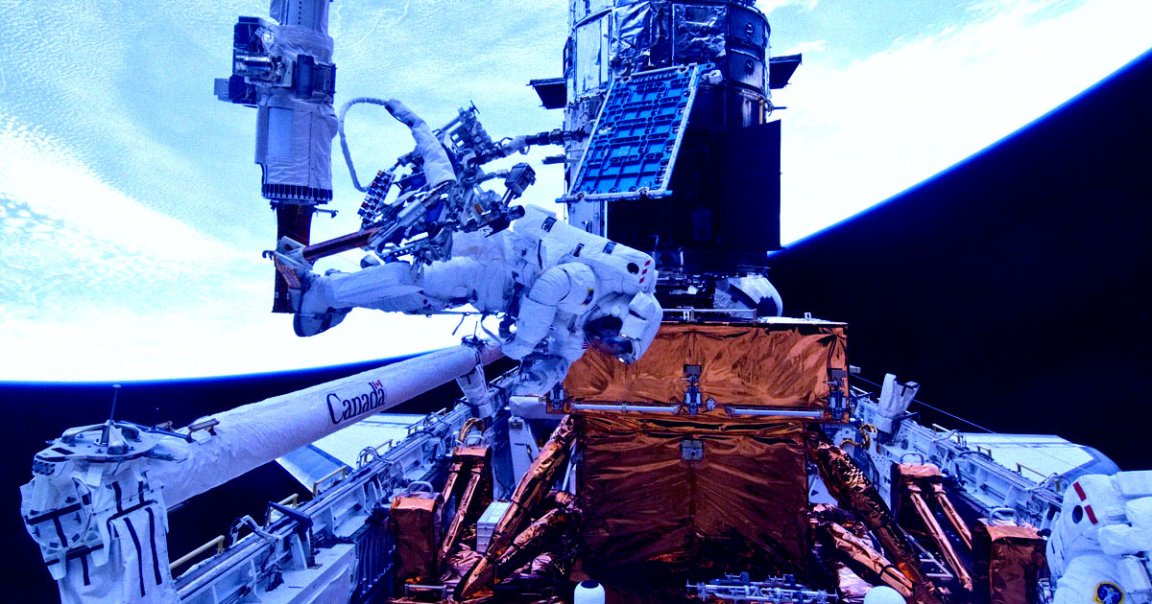
It’s been 15 years since the last time NASA’s groundbreaking Hubble Space Telescope was serviced by astronauts.
And the aging observatory, which has been circling our planet in a low Earth orbit since 1990, is looking a little worse for wear. Ongoing technical issues have forced teams back on the ground to halt scientific activities time and time again.
Which is why billionaire space tourist Jared Isaacman, who already circled the Earth inside a SpaceX Crew Dragon, has said he’s willing to foot the bill for a maintenance mission to fix up the aging telescope.
But as NPR reports, whether NASA is willing to take him up on the offer remains to be seen. Emails obtained by the broadcaster suggest that the agency’s scientists are still weighing the risks and rewards of such a mission. After all, the potential of doing damage to the telescope has always existed, even when NASA’s Space Shuttle came by during its visits.
“This is a fantastic savings for NASA, but also a very challenging concept for NASA legal and procurement,” NASA astrophysics program manager Barbara Grofic wrote in a December 2022 email obtained by NPR.
And a retired Hubble operations expert named Keith Kalinowski who helped evaluate the plan wrote that while he’d be in favor of a “well-planned” mission to service the orbital outpost, Isaacman’s plan was “unnecessary and risky.”
The current program manager for the International Space Program, Dana Wiegel, also wrote that “SpaceX’s view of risks and willingness to accept risk is considerably different than NASA’s,” highlighting “the complexity of the construct that is needed to safely do a reboost and the extreme immaturity of the spacesuit.”
“The other issue is the need for reboost now versus later,” wrote astronaut John Grunsfeld, who performed numerous previous repairs to the Hubble. “Perhaps the opportunity with Polaris won’t be there, but NASA can work with Congress and the Administration to request funds for a Hubble reboost or enhancement mission, using a commercial partner where NASA is in the drivers [sic] seat, and the maturity of the space systems is higher and lower risk.”
Another astronaut who worked on repairing the Hubble, Scott “Scooter” Altman, told NPR that he felt an incredible relief after the repairs were completed and “we’re not the crew that killed the Hubble Space Telescope, the most incredible scientific instrument ever deployed by humans.”
It’s an unusual clash of decades-old tech that revolutionized the world of astronomy and cutting-edge space exploration, highlighting the tension between the space agency and the burgeoning private space industry, which has made considerable strides in recent years, in large part thanks to SpaceX.
Isaacman was the commander of the first all-civilian mission into space, which saw a crew of four circle the Earth inside a SpaceX Crew Dragon spacecraft in September 2021.
For years now, he’s been pushing for the maintenance mission, arguing that “there is only a limited time to plan” in a January tweet. “I am a bit concerned that the ‘clock’ is being run out on this game.”
But SpaceX still has a lot to prove. For one, the company has yet to prove that astronauts can safely venture outside of the company’s Crew Dragon capsule.
That part, at least, could soon change. Isaacman has bought a set of three private missions into space as part of the Polaris Program, including an upcoming mission dubbed Polaris Dawn that will see astronauts donning SpaceX’s recently-announced EVA suit to perform the first-ever private spacewalk later this year.
Meanwhile, NASA has been investigating the idea of having a private crew visit the Hubble on Isaacman’s dime since 2022.
The investigation included Isaacman visiting NASA’s facilities to discuss what a maintenance mission to Hubble would entail.
But despite some initial optimism, Hubble experts voiced concerns over SpaceX not having the expertise or capability to work on the decades-old observatory. Approaching Hubble with its massive solar panels could prove extremely difficult and risky.
SpaceX’s spacecraft also doesn’t have a robotic arm, like NASA’s Space Shuttle, which was used to service the Hubble five times between 1993 and 2009. Without an airlock, the entire capsule would have to be depressurized during a spacewalk, then repressurized afterward.
For now, all eyes are on SpaceX and Isaacman, who will attempt the first “commercial EVA,” as he put it earlier this month. “It’s the first time you don’t have, you know, government astronauts undertaking such a mission.”
Fortunately, there’s still time. Hubble is still in astonishingly good shape considering its age, and NASA is hoping to keep using it well into the 2030s.
More on Hubble: The Hubble Has Broken Down Yet Again